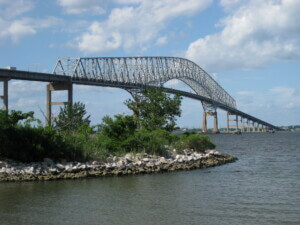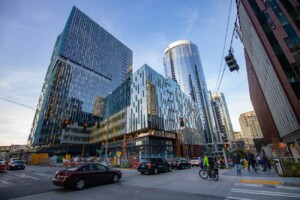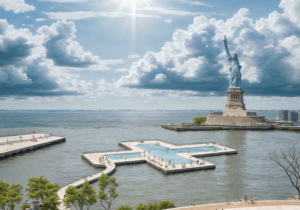In a shift from America’s traditional 20th century landscape, more and more cities are now considering removing major highways in favor of housing, parks and economic development.
The chief motivation seems to be money, according to a recent NPR report highlighting the growing movement and the removal of Cleveland’s West Shoreway. As highways age, keeping them around doesn’t justify the high cost of maintenance.
But tearing these highways down also means new opportunities for developing valuable real estate and rehabilitating blighted land. The federal government awarded $16 million to replace a New Haven highway with pedestrian boulevards last fall, and other TIGER II funds to explore highway removal in the Bronx and New Orleans have also been issued. New Haven Mayor John DeStefano Jr. remarked, “We think this is a big f—ing deal.”
Decades after urban renewal programs first put up highways, most city planners now realize that highways drain vitality from healthy neighborhoods and lower property values. San Francisco’s Embarcadero Freeway and Central Freeway are two poster children for how highway removal can rejuvenate neighborhoods. The collapse of the Miller Highway in New York also made way for what’s now West Street and Hudson River Park.
BALTIMORE: Demolition of Baltimore’s infamous “Highway to Nowhere,” a one mile stretch that ends in a grassy slope, began last fall. In 1974, construction sliced through a vibrant working class area of west Baltimore, demolishing 700 homes and displacing 2,000 residents, mostly African American. The area is now characterized by vacant homes and high poverty rates. President Obama’s American Recovery and Reinvestment Act awarded $2.8 million for the highway’s removal, which will make room for transit-oriented development.
NOW:
PROPOSED:
CLEVELAND: The only way to get from downtown Cleveland to the waterfront is through poorly lit tunnels underneath the West Shoreway freeway. NPR recently highlighted the city’s plan to convert the highway into an urban boulevard, in line with efforts to develop the waterfront, but opposition from suburban commuters forced the city to scale back the project. The original proposal would have added crosswalks to the road, parks, offices and housing, while the actual project will just focus on rebuilding the pedestrian tunnels.
NOW
PROPOSED (rejected):
NEW ORLEANS: Decades before Hurricane Katrina and getting its own HBO series, Treme was one of the wealthiest African American communities in New Orleans, and Claiborne Avenue was its teeming commercial center. The construction of the Claiborne Expressway in the 1950s changed all that, displacing families and over 100 businesses. City planners are currently debating removing the highway as part of post-Katrina rebuilding. The plan would reclaim 35-40 city blocks from urban blight and 20-25 blocks of open space.
NOW:
PROPOSED:
SEATTLE: A battle is raging in Seattle over the demolition of the Alaskan Way Viaduct. The highway’s coming down after sustaining damage in a 2001 earthquake, but the $4.2 billion tunnel slated to replace it by 2016 remains a political hot potato. The project is entangled in lawsuits, with critics seeking to vote on the project. Mayor McGinn came out against the Seattle’s political establishment in support of a street level replacement. He’s also pushing for removal of the Viaduct next year, citing the damage it would cause in an earthquake.
NOW:
PROPOSED:
NEW HAVEN: The city recently received a $16 million TIGER II grant to convert part of Route 34 into an urban boulevard. Residents envision a re-do with narrow car lanes, wide sidewalks and a bike lane. The plan will add 960 permanent jobs and reclaim 11 acres of land that can be developed and taxed. It will finally unite the city’s central business district with the rest of New Haven, ending the highway’s stifling effect on economic development. Built in 1959, the highway displaced 600 families and 65 businesses and was never completed.
NOW:
PROPOSED:
BUFFALO: After several multi-million dollar projects failed to slow Buffalo’s decline, planners set their sights on removing two of the city’s major highways. The Skyway and Route 5 make commutes more difficult, cost millions in annual maintenance and block waterfront development. The state Department of Transportation decided to keep the elevated roadways in 2008, even though local officials and residents wanted a street level boulevard. A coalition of citizens and civic organizations appealed the decision in 2008, and continue to advocate demolition.
NOW:
PROPOSED:
LOUISVILLE: In the opening scenes of Elizabethtown, Kirsten Dunst maps out Interstate 64 in Louisville for Orlando Bloom because “the roads around there are hopelessly and gloriously confusing.” He gets lost anyway, banging his hands against his steering wheel and yelling “60B!” The Ohio River Bridges Project, a $4.2 billion plan to expand the highway to 23 lanes of traffic at its widest point, would make things even more challenging. In 2005, two Louisville businessmen launched a grassroots campaign to remove the highway and develop the waterfront with a pedestrian-friendly boulevard. But it looks like the project’s continuing with wider elevated lanes of traffic with some cost cut adjustments made in recent days.
NOW:
PROPOSED:










